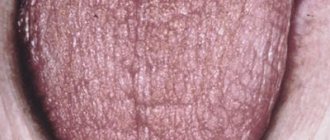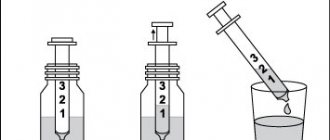Akathisia (rabbit syndrome) is a serious disease that causes a lot of inconvenience to a person. This syndrome is often mistaken for ordinary restlessness, since it is characterized by certain psychomotor disturbances.
With the development of this disease, a person has an irresistible need to change the position of the body, which prevents him from sitting still. With this diagnosis, problems with falling asleep and other disorders occur.
In medical practice, akathisia is usually called a disorder of motor activity, which is characterized by constant internal restlessness and the need to be in continuous movement. That is why people with this syndrome constantly sway, raise and lower their lower limbs, march in place or shift from foot to foot.
Such patients cannot sit or stand still. Symptoms usually subside during sleep, but some people experience anxiety even after falling asleep.
What is akathisia and how does it manifest itself?
Akathisia is a syndrome of chronic restlessness in adults combined with a feeling of severe internal anxiety. It manifests itself as a constant thirst for movement, in making aimless movements that can interfere with the person himself and those around him. The patient cannot sit still, he is burdened by being in a calm state, he constantly moves his legs, jumps up, walks from corner to corner along the same route. This can happen not only during the day, but even at night, when a person gets up during sleep to walk aimlessly. As a result, night sleep is disrupted, an inversion of day and night sleep occurs, and the rhythm of life and daily routine are disrupted. Gradually, this leads to the inability to live a normal life, increased anxiety, asocialization of the individual, and the development of various mental disorders.
Akathisia can occur as a side effect of taking certain medications (this will be discussed below). The syndrome is often associated with other pathologies. Initially, the term “akathisia” was introduced and described by the Czech psychiatrist L. Gaskovec as a phenomenon accompanying certain mental disorders in 1901. Later, French doctors fleshed out this theory, linking the development of akathisia with the disease of secondary parkinsonism. We were talking about a disease that occurs as a complication of encephalitis. Over time, thanks to the discoveries of scientists, the list of risks has been expanded. It turned out that people with Parkinson's disease, chronic alcoholics, drug addicts, as well as patients taking a number of psychotropic medications are often susceptible to symptoms of akathisia.
Set of provoking factors
Scientists distinguish two main approaches to studying the causes of akathisia, namely pathophysiological and drug. The first category of factors is much less common and therefore practically not taken into account.
Non-drug causes of the disease began to be studied by scientists only in the last decade, which became possible thanks to the development of accurate diagnostic tools.
The drug theory of the origin of the disease is one of the classical approaches that have a high degree of reliability. The development of this pathology in most cases is associated with taking medications from the category of antipsychotic drugs. They have a direct or indirect effect on the synthesis of dopamine.
Currently, scientists have not been able to fully investigate this process. However, it is safe to say that the cause of akathisia lies in the long-term use of pharmacological drugs that are responsible for blocking dopaminergic transmission.
It has also been established that akathisia has a definite connection with Parkinson's disease and similar syndromes. However, at present it has not been possible to establish the causative factor - it may be the disease itself or the use of drugs used to treat it.
In addition, antidepressants can lead to the onset of the disease. Researchers note the appearance of symptoms of akathisia when testing these drugs. They manifest themselves in the form of increased arousal, hyperactivity, and emotional lability.
It has now been established that akathisia can develop after using the following categories of drugs:
- neuroleptics – Asenapine;
- SSRIs – Citalopram, Fluoxetine;
- antidepressants – Trazodone, Venlafaxine;
- antihistamines – Cyproheptadine, Diphenhydramine;
- drug withdrawal syndrome – barbiturates, benzodiazepines;
- serotonin syndrome – certain combinations of psychotropic drugs.
Causes of akathisia
The reasons for the development of akatizive syndrome are divided into several types.
- Taking psychotropic drugs.
The most common side effect of chronic anxious restlessness occurs from taking antipsychotics: haloperidol, droperidol, pimozide. A similar effect is less common after atypical antipsychotics (olanzapine, aripiprazole) and antidepressants (mirtazapine). Sometimes sedatives (chlorpromazine) also lead to akathisia. The syndrome can also be caused by excessive use of sleeping pills, especially the barbiturates group.
- Drug use.
Mental changes towards the development of akathisia are characteristic of patients with opium and cocaine addiction. These drugs are strong poisons that depress nerve conduction in the brain. The list of substances that provoke akathisia also includes drugs from the amphetamine group, methylphenidate.
- Chronic alcoholism.
Long-term systematic consumption of alcohol has a detrimental effect on nerve endings and inhibits the functions of the subcortex of the brain. Neuromediation is disrupted, which negatively affects the functioning of the entire central nervous system.
- Parkinsonism, other mental disorders.
Both primary and secondary parkinsonism can cause akathisia. Science has not yet established exactly how great the role of concomitant medication is in treating the disease. The influence of two factors is likely to occur simultaneously. Chronic restlessness also occurs among patients with schizophrenia, anxiety and affective disorders.
Factors that increase the risk of chronic restlessness:
- genetic predisposition; in particular, science associates it with the gene of the first chromosome DRD2;
- various pathologies of the central nervous system;
- suffered traumatic brain injuries;
- dementia.
In addition, cases of akathisia are possible with abrupt withdrawal of psychoactive substances. An example would be someone waking up from anesthesia. Stopping treatment with antipsychotics and antidepressants can also cause a similar effect.
Causes
The development of akathisia is associated with dysfunction of dopaminergic pathways responsible for feeding certain areas of the brain.
The formation of the pathological condition is based on a disturbance in the serotonin networks, noradrenergic, opioid and GABA systems and neurokinin receptors. Such transformations provoke oxidative stress in neurons. A decrease in dopaminergic dynamics of the central nervous system leads to the inclusion of adaptation mechanisms to changes. One of these processes is an increase in the level of noradrenergic activity of the central nervous system, which leads to an increase in the secretion of adrenaline by the adrenal glands. An increase in the neurotransmitter in the systemic bloodstream leads to an increase in the psycho-emotional state, the appearance of anxiety and fear. Patients at risk include those with a history of:
- treatment with high dosages of antipsychotics or a sharp increase in dosage
- therapy with long-acting or atypical antipsychotics
- mood disorders
- mental disorders
- oncology
- pregnancy
- organic brain lesions
- chronic alcoholism
- deficiency of iron, magnesium
Also at risk are women, elderly patients and children.
Characteristic symptoms
The picture of the disease consists of two characteristics: subjective (the patient’s internal sensations) and objective, or motor (excessive motor activity).
At the first stage, restlessness manifests itself in leg movements. A person cannot sit, stand, or lie quietly. He stomps, shuffles, jumps up, walks, shakes his leg, fidgets, tosses and turns from side to side.
Symptoms then spread to other parts of the body. This manifests itself in antics, jumping, darting glances, head shaking, constant meaningless, aimless movements.
The subjective component of the syndrome is expressed in anxiety, a painful feeling, often for no apparent reason. When complaining to a doctor, it is difficult for such a person to describe in words his internal sensations. They can be both sensory and psychological. The patient may feel a burning sensation, itching, aching inside the muscles and joints, but the diagnosis does not confirm any diseases of the musculoskeletal system. A person complains of psychological discomfort coming from within, a vague anxiety that forces him to move somewhere. The calmer the body position, the greater the feeling of anxiety.
In the later stages, the patient's character changes. He becomes irritable, suspicious, ingratiating. The pathology causes sleep disturbances in him. If akathisia is caused by an underlying mental disorder, then if left untreated it will only get worse.
Clinical picture
Akathisia usually has two main components. Moreover, one of them is leading, and the second is not so strongly expressed.
So, the first component is called sensory or cognitive. It manifests itself in the form of uncomfortable internal sensations that force a person to perform certain actions. The patient is aware of these symptoms and can keep them under control.
The sensory component usually manifests itself in the form of a feeling of anxiety, tension, and increased irritability. Sometimes people experience clear somatic disorders - for example, pain in the legs or lower back.
The second component is motor. It consists in the fact that patients perform repetitive standard movements, which are individual for each person. Some people constantly walk, others sway their bodies or kick their feet, and still others itch or pick their nose.
Quite often, at the very beginning of a motor act, people cry out. They can also make mooing sounds. After motor activity begins to decline, vocalization disappears. It may appear at the beginning of the next motor act.
Classification of the disease, forms
Based on the prevalence of symptoms, akathisia is divided into the following forms:
- Motor akathisia. Patients experience movement disorders without anxiety. But at the same time they constantly move, mark time, walk, jerk their legs, etc. For example, a patient may stomp his foot in place without noticing, even when writing something.
- Mental form. Restlessness is almost reduced to zero, but subjective sensations are a source of discomfort. Most often it is constant anxiety, restlessness, and strong internal tension.
- Sensory. A person feels itching, muscle contraction, and other unpleasant sensations (usually in the lower extremities). He constantly scratches himself, rubs his knees, changes his position, etc.
Classic akathisia combines all of the above symptoms. The patient's complaints usually coincide with observation data of his behavior. The patient experiences a feeling of anxiety for no reason, which pushes him to move in an unknown direction and for what reason.
There is also a classification based on etiology, i.e. origin of the syndrome:
- Parkinsonian akathisia;
- Iatrogenic;
- Withdrawal symptoms;
- Caused by psychoactive substances;
- Post-stroke;
- Spontaneous (due to mental disorders).
The disorder varies in the timing of symptoms:
- Acute form. Develops in the first days, sometimes hours after the influence of a provoking factor. For example, a patient is taking antipsychotics, and the dosage of the drug has been increased. In such cases, reduce the dose or replace the drug with another. The syndrome gradually subsides after this.
- Chronic form. It is observed in a quarter of patients treated with antipsychotics. Occurs after taking the medicine for a month or more. It also gradually regresses after changing the drug.
- Late form. Symptoms of the disease appear months or years after the onset of exposure to the substance. In this form, discontinuation of the drug causes a deterioration in the condition. A person gets better only with an increase in dose, but not for long. Such akathisia may persist for the rest of life or gradually disappear after stopping taking the substance.
- Withdrawal syndrome. Familiar to any person who has quit drinking, smoking, using drugs, taking potent medications such as antipsychotics, sleeping pills, etc. It appears during the first two weeks after stopping taking the substance, but may persist longer (4-7 weeks). If withdrawal akathisia does not disappear after two months, a late form of the syndrome cannot be ruled out.
Pathogenesis
According to recent studies, akathisia has a much more complex developmental mechanism than isolated dopaminergic dysfunction. Several years ago, a theory arose that the decrease in dopaminergic activity in people with Parkinson's disease or in patients treated with antipsychotics may in some cases involve compensatory mechanisms. As a result, typical anxiety sensations and motor restlessness arise. In this regard, the production of adrenaline by the adrenal glands also increases significantly, which activates a feeling of insurmountable anxiety. All this together causes typical manifestations of anxiety and an irresistible desire to be in constant motion.
Basic principles of diagnosis
Neurologists and psychiatrists are involved in the diagnosis and treatment of akathisia. Making a diagnosis is often difficult due to dementia, an unclear description of subjective sensations by the patient himself, and his lack of understanding of what is happening. In addition, at the very beginning of the pathology, patients can still control hyperkinesia through willpower: do not jump up, do not swing their legs, etc. Some patients have a negative attitude towards doctors and the treatment process. In practice, there are cases when such negativism is the only visible manifestation of akathisia.
Diagnostics today uses many modern methods: MRI, CT, MSCT, EEG, REG of the brain. However, they allow us to exclude other diseases, nothing more. The doctor needs to interview the patient about the sensations he is experiencing and observe the patient’s behavior. Since the patient may hide symptoms and restrain movements, it may be necessary to interview relatives.
The patient's condition is assessed using a special Burns scale, which includes three points each to characterize the subjective and objective components. The degree of a person’s worries about the manifestations of his disease is separately assessed. Akathisia should be distinguished from other conditions and pathologies with increased motor activity (anxiety, psychomotor agitation, Tourette's syndrome, etc.).
Diagnostics
Akathisia is difficult to diagnose because anxiety, restlessness and other signs may be mistaken for psychosis, depression or signs of a medical condition. The inability to make a correct diagnosis leads to an increase in the dosage of the antipsychotic drug, which aggravates the course of akathisia.
Due to incorrect diagnosis of the root cause of the pathological condition, some specialists prescribe anti-anxiety drugs that do not help cope with the disease, but only mask it. Abnormal motor activity may also be misinterpreted. Instead of a diagnosis of akathisia, the patient may be given dyskinesia or other psychoneurological pathologies. In this regard, differential diagnosis comes to the fore.
Treatment of akathisia
The therapeutic method is prevalent in the treatment of the disease. If acasative syndrome is caused by taking medications, you need to immediately change the dosage or replace the drug.
Patients are prescribed magnesium drugs, which, depending on the etiology and symptoms, are combined with medications from other groups. It can be:
- Beta blockers;
- Central anticholinergics;
- Antiadrenergics;
- GABAergic drugs;
- Dopaminergics;
- 5-HT-2 blockers.
With timely treatment, the prognosis is good. The course of treatment for withdrawal syndrome lasts about three weeks, for other forms – up to 8 months. The patient's relatives need to carefully monitor his condition.
Treatment
Before starting treatment for akathisia, the doctor must identify the specific type of pathology. Due to the fact that in most cases the syndrome is iatrogenic in nature, a specialist can review the prescribed treatment regimen and exclude the use of certain medications. Either a dose reduction or a complete replacement of drugs was carried out. Almost all patients are advised to take magnesium supplements. Treatment is carried out with the combined use of the following main groups of pharmaceuticals:
- central anticholinergics;
- beta blockers;
- GABAergic agents;
- 5-HT2 blockers;
- antiadrenergic agents;
- dopaminergic drugs.
Akathisia and insomnia
Symptoms of akathisia prevent the patient from sleeping peacefully. Patients experience constant difficulty falling asleep, roll over in bed, and have restless thoughts entering their minds. There are known cases of awakening from sleep in order to walk around the house or street. Constant lack of sleep at night leads to daytime sleepiness. After some time, “confusion between day and night” occurs, i.e. sleep time inversion.
If you take sleeping pills to combat insomnia, they do not always help and may even worsen the problems. The patient spends a lot of strength and energy on meaningless movement, without restoring strength through night sleep. Exhausted, some people see no way out and, in desperation, try to commit suicide.
Symptoms
If akathisia develops in the classic form, then it is characterized by the presence of anxiety combined with hyperactivity. At the very beginning of the development of the pathology, the patient is disturbed by motor disturbances in the legs, which is why the person cannot be at rest while standing, lying or sitting. Such patients are in constant motion, sometimes even marking time in the same place. If the patient occupies a horizontal position, then he constantly changes the position of his body; if he is in a sitting position, then he constantly swings his legs.
Over time, the pathology progresses, causing akathisia to spread from the lower extremities to the upper extremities. In the absence of proper treatment, the patient begins to wriggle his whole body, move in jumps, and in extreme cases, even involuntary movement of the eyeballs is observed.
Sensory akathisia manifests itself in the presence of unpleasant sensations throughout the body. The mental component is expressed in excessive anxiety syndrome, impossibility, tension. Patients claim that while they are in motion, it becomes much easier for them, but as soon as they stop, anxiety and fear begin to increase, which acts as a provoking factor for the start of new movements.
Akathisia often provokes sleep disturbances. A pathology that occurs over a long period of time without proper treatment causes significant changes in a person’s character. Such patients become suspicious, anxious, annoying, and nervous. Unrecognized pathology in time provokes the development of a number of complications.
Prevention
The best prevention of chronic restlessness syndrome is not to take psychotropics, sleeping pills and antidepressants. To do this, you need to lead a lifestyle so as not to bring your body to a state that requires taking them. Try to avoid stress if possible, learn to experience it adequately, perceive life philosophically, and look at it positively.
In cases where drug correction of pathologies is still necessary, it is important to use medications rationally, avoiding overdoses. Experts try to prescribe medications with the least extrapyramidal potential, starting with small doses.
Do not under any circumstances self-medicate for insomnia, depression, chronic fatigue syndrome, vegetative-vascular dystonia and other unpleasant syndromes. Wrong choice of drug without taking into account general medical history and drug interactions can lead to serious consequences. It sounds like a hackneyed truth, but it’s worth saying again about the benefits of a healthy lifestyle . First of all, you need to completely give up alcohol and drugs. A person who has nothing to give up will never experience akathisic drug withdrawal syndrome.
Relatives and friends of a person at risk need to provide him with all possible support. It is also extremely important to set this person up only for positive changes.
Complications
Akathisia very often becomes the reason for the patient to refuse treatment due to a negative attitude towards the procedures. Due to restlessness, the patient simply cannot carry out the entire necessary range of therapeutic measures. The syndrome very often provokes depression, aggressive behavior, and suicidal thoughts. Such patients may even pose a danger to people around them. Sometimes patients try to help themselves on their own: to relieve all manifestations of the pathology, they begin to abuse alcohol and smoking, which over time leads to the development of addictions, but in no way to the disappearance of the pathology.
Prognosis and prevention
The success of treatment is directly related to when the syndrome was recognized - the earlier this was done, the easier the therapy will be and the faster the syndrome will stop bothering the patient. In most cases, with the correct therapeutic tactics, patients recover and no associated complications arise.
Due to the fact that akathisia occurs mainly while taking medications, preventive measures include strict adherence to all recommendations of specialists on the use of antipsychotic medications and antidepressants.
Information sources:
1. Drug dyskinesias/ Levin O.S.// Modern therapy in psychiatry and neurology. — 2014 — No. 3. 2. Drug-induced extrapyramidal disorders/ Shtok V.N., Levin O.S.// In the world of drugs. – 2000 – No. 4. 3. Pharmacotherapy in neurology / Shtok V.N. — 1995








